Thursday, August 23,1928
Wednesday morning Jack and Milt went to Oxford. I walked down The Mall and through St. James Park, taking pictures and watching the picturesque soldiers with [their] dark trousers, red coat, and tall fur hat and much braid and brass on, parade around the Royal Military Academy grounds. I finally walked to Westminster Abbey and went through it. The building is very large and beautiful. There are hundreds of statues, busts, plaques, and groups in memory of most all men famous in English history. Milton, Tennyson, Browning, Southey, Handel, Burns and a host of other poets, musicians, and kings lie there. Over Ben Johnson‘s grave are the words O Rare Ben Johnson. Browning and Tennyson lie side by side under the heavy flagstones of the Poets’ Corner.
Sir Isaac Newton has an attractive monument. There are many fine large stained glass windows there. Longfellow, Samuel Butler, Milton, Southey, Burns, Ben Johnson, Coleridge, Scott, Wordsworth, Pope, Goldsmith, Dickens, Stephenson, and Garrick all have busts and plaques. Shakespeare has a fine statue of himself. The tall arches, high beamed ceiling and gloomy light gave the place an old, sacred air, and surrounded by such a host of truly great men, an awe-inspiring air. Beautiful workmanship is exhibited in the stone exterior and fancy work.
The same is true of the House of Parliament across the street. It is very pretty. Big Ben in the tower measures 22 feet in diameter, I believe. We were only permitted to go through the great hall. It was very large and tall. Bronze plates in the floor and walls mark the sight of famous different trials, etc. After a late lunch I went through the British Museum. In it are fine collections of Roman statues, Egyptian mummies, and Grecian works of art. It also contains a huge library and a wonderful collection of letters and documents from many men famous in history. Among them are letters from George Washington, most of the English kings and a few queens, a description of the beheading of Mary, Queen of Scots, a mortgage of Shakespeare’s, original copies of music by Handel, Schumann and many others, and a contract between Milton and a printer for the sale of the copyright of Paradise Lost for £5.
Today Jack and I spent all morning seeing about our passage back to the States [This will be important months later in Cairo], and procuring a German visa. In the afternoon Milt and I took a bus to St. Paul’s Cathedral. It is a huge place, but very beautiful inside. We went down in the crypts and saw Wellington’s grave and those of Nelson, Sir Christopher Wren, Florence Nightingale, and the founder of the YMCA. Also the big funeral wagon on which Wellington was carried to St. Paul’s. Next came London Tower. It is sort of a fortress surrounded by a dry moat and walls, and on the banks of the Thames near Tower Bridge. The White Tower was full of exhibitions of armor, including the armor of many kings, guns, swords, cannons and the like. The Bloody Tower was nearby. In it two young princes were killed and thrown down a narrow winding stairs to be buried beneath the floor in the White Tower where they were found many years later. In it Sir Walter Raleigh spent 12 years in imprisonment at the command of James I and there he wrote his history of the world which is still there. In a room in the White Tower he and his wife were thrown by the queen because of irritation caused by the secret marriage of Sir Walter to her first lady-in-waiting. There were instruments of torture there and a beheading block and knife.
Next we saw the crown jewels. Diamond-studded gold crowns, heavily jeweled ornaments, crowns, and great gold plates three feet in diameter and full of marvelous designs. Spoons, dishes, salt sellers, huge wine fountains and chalices, all gold and beautifully wrought. They had wonderful designs, made out of all sorts of precious jewels, one diamond being the largest cut diamond in existence. Millions of dollars worth of gold and jewels.
Leaving the Tower we visited the Port of Authority of London or the clearing house. It is a beautiful new $15,000,000 building of marble. After supper at the Y, letter-writing. Got my jacket from home.


 from Jean. Left Norfolk at 11:20 AM and sailed to Newport News for more cargo. Left at 5:20 PM. Now heading for open sea. Just passed British freighter.
from Jean. Left Norfolk at 11:20 AM and sailed to Newport News for more cargo. Left at 5:20 PM. Now heading for open sea. Just passed British freighter.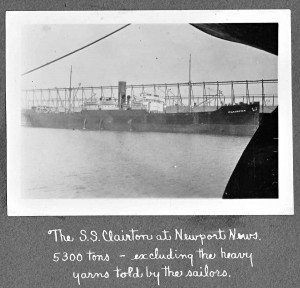
 Saturday we went to town and received mail from Mother, Jean, and Uncle Billy Graves. Just before
Saturday we went to town and received mail from Mother, Jean, and Uncle Billy Graves. Just before 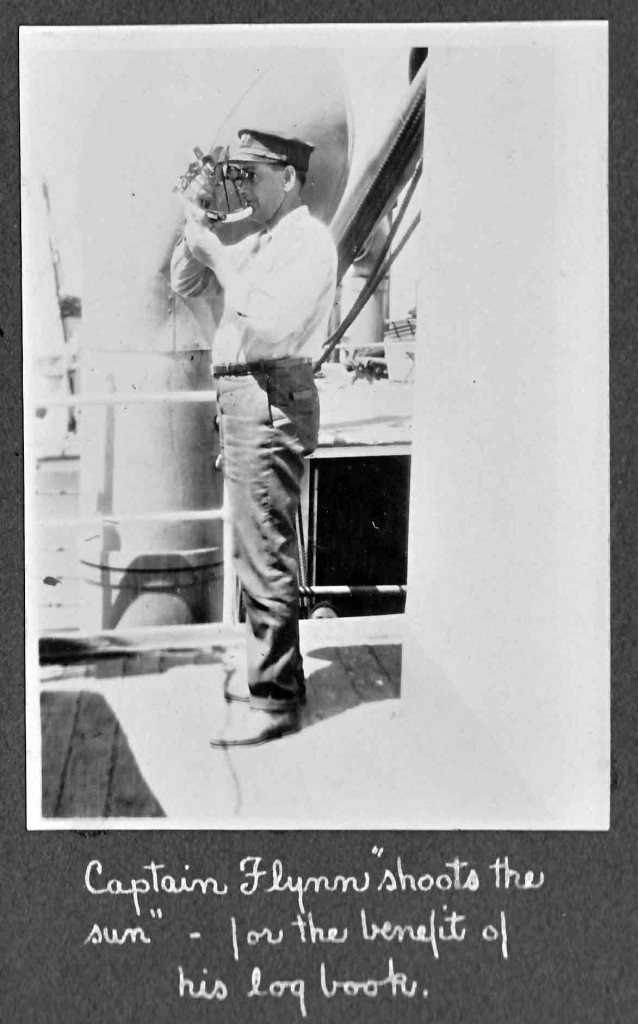
 Most every night we gather in the lounge and shoot the gab. When Rudy is around the talk runs to the two things he is interested in—women and fights. He has had many interesting experiences with both. The Capt. is a great sport and tonight we were all trying all the
Most every night we gather in the lounge and shoot the gab. When Rudy is around the talk runs to the two things he is interested in—women and fights. He has had many interesting experiences with both. The Capt. is a great sport and tonight we were all trying all the 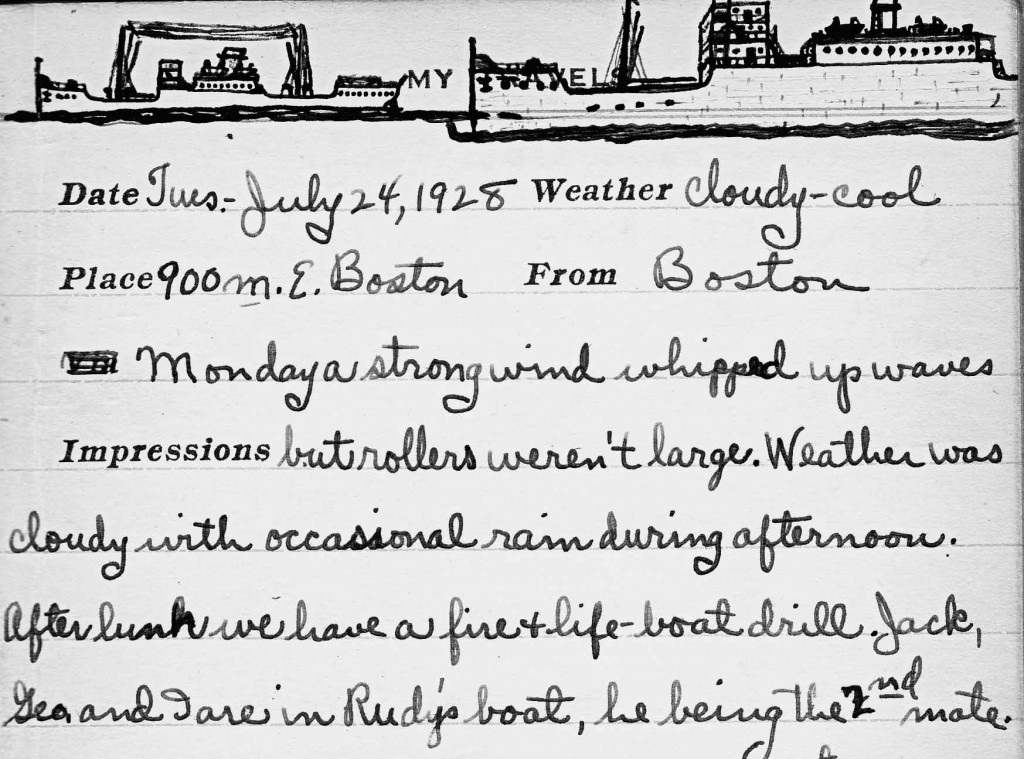 Boston. They are all lots of fun, Bill especially. It is fun to listen to his southern brogue. He looks a bit like Duck Quackenbush but has a football build and he plays the game. Also acts a bit like Duck. I enjoy playing the victrola as it brings back memories. We get radiogram news every day at breakfast. My back and shoulders are peeling for the second time this year.
Boston. They are all lots of fun, Bill especially. It is fun to listen to his southern brogue. He looks a bit like Duck Quackenbush but has a football build and he plays the game. Also acts a bit like Duck. I enjoy playing the victrola as it brings back memories. We get radiogram news every day at breakfast. My back and shoulders are peeling for the second time this year.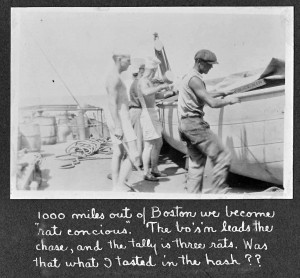
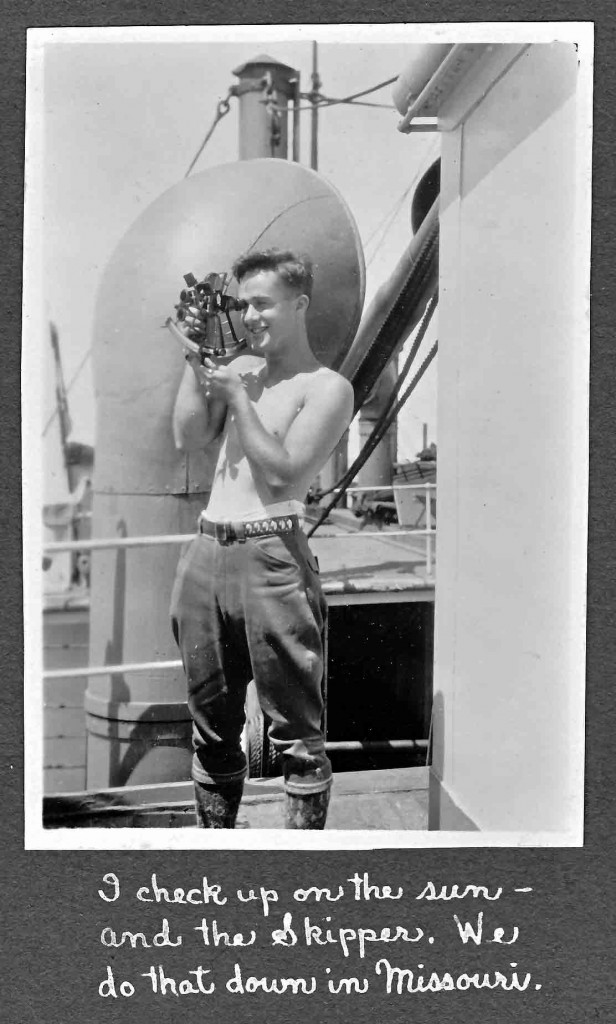 porpoises come near the boat. These fish like to swim just in front of the prow. Thus it is not hard to harpoon
porpoises come near the boat. These fish like to swim just in front of the prow. Thus it is not hard to harpoon 
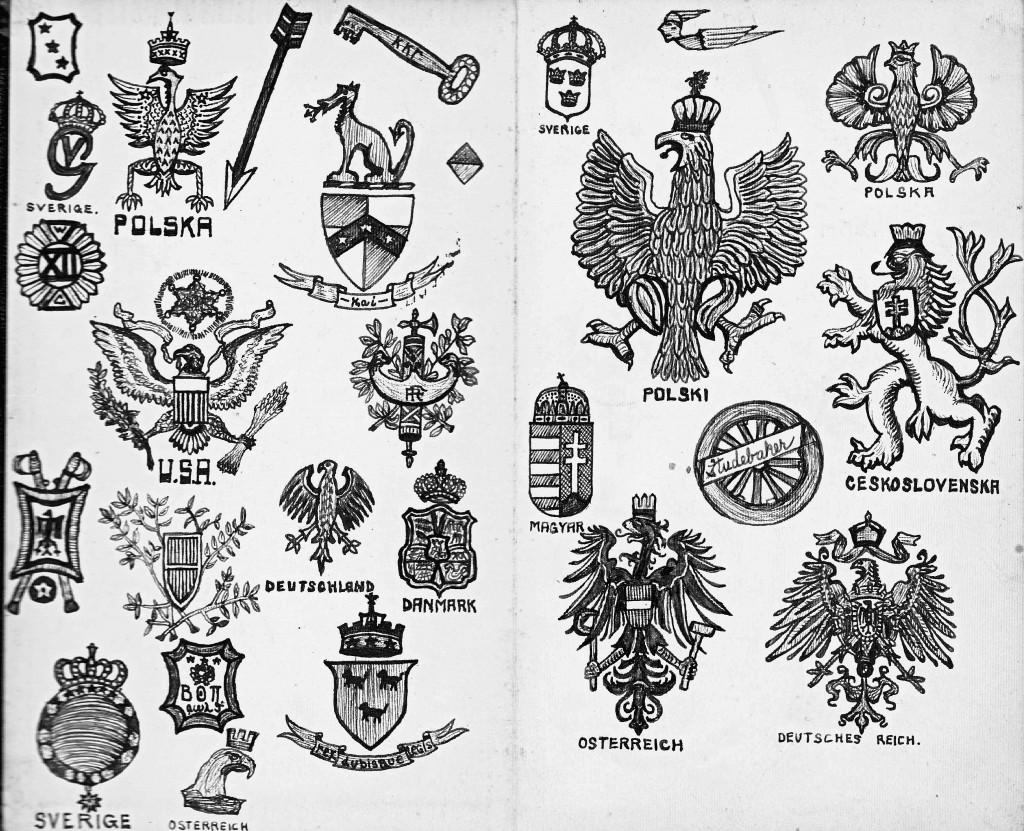
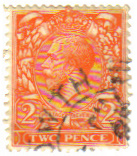 Tuesday morning we sailed in the bay past Liverpool and up the canal. Until we reached the latter, it was very foggy and cold. In spite of this many people were on the beaches. It cleared up as we started the 47-mile trip up the canal. Went through five locks and docked at Manchester at 10 PM. Although the town closes down at 10, we took a walk around. Had to press a little before going to bed at 2:30 AM and the clothes looked it. Today the customs came on board and sat in our cabin talking to us a while. Then we went to the immigration office to Capt. Crawford, the grouchiest man on earth. Bill sat on the counter and the old fizzle told him to get off, that it was a government office.
Tuesday morning we sailed in the bay past Liverpool and up the canal. Until we reached the latter, it was very foggy and cold. In spite of this many people were on the beaches. It cleared up as we started the 47-mile trip up the canal. Went through five locks and docked at Manchester at 10 PM. Although the town closes down at 10, we took a walk around. Had to press a little before going to bed at 2:30 AM and the clothes looked it. Today the customs came on board and sat in our cabin talking to us a while. Then we went to the immigration office to Capt. Crawford, the grouchiest man on earth. Bill sat on the counter and the old fizzle told him to get off, that it was a government office.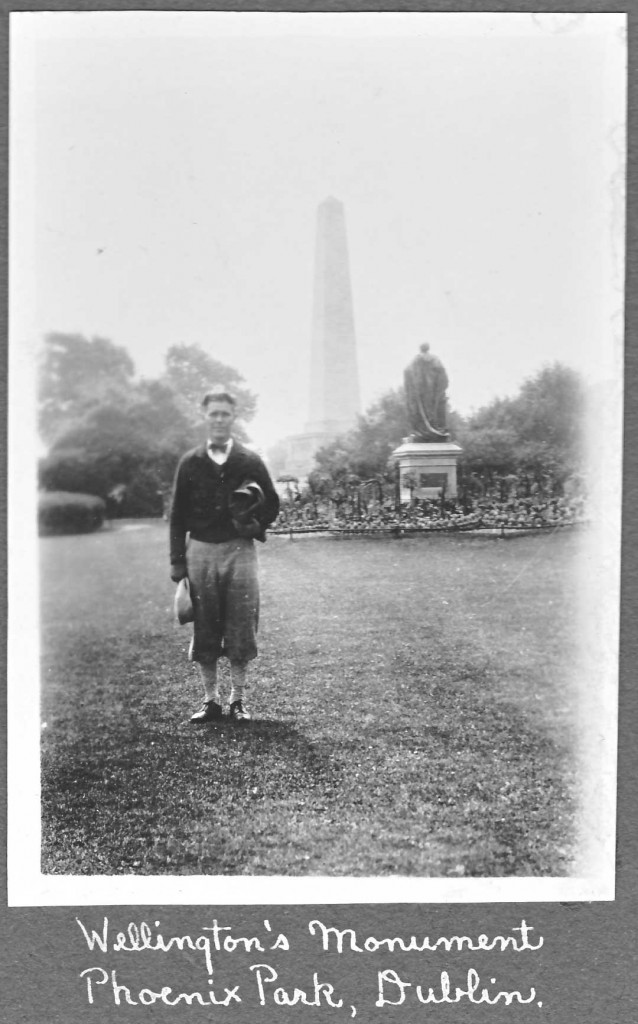

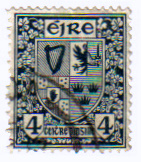 Landed Friday morning at 8:30 AM in Dublin. After parking our luggage at the Y we finally found a place to eat. Things don’t open there until 10 and close at 10. The food was bum and cost too much. Next time I come over, I’ll know where not to eat.
Landed Friday morning at 8:30 AM in Dublin. After parking our luggage at the Y we finally found a place to eat. Things don’t open there until 10 and close at 10. The food was bum and cost too much. Next time I come over, I’ll know where not to eat. Boat left at 8:15 PM so we got there at 6:30 and got a stall to sleep in. Steerage was packed going back, but outside of the smell, I didn’t mind. Got several hours sleep for a change. By noon Saturday we had bought bicycles and all accessories for £3/l5s each or about $18.50.
Boat left at 8:15 PM so we got there at 6:30 and got a stall to sleep in. Steerage was packed going back, but outside of the smell, I didn’t mind. Got several hours sleep for a change. By noon Saturday we had bought bicycles and all accessories for £3/l5s each or about $18.50.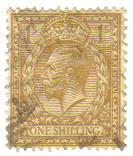 Left Carlisle with no breakfast and with the exception of a glass of milk for Jack and two bananas for me at 11:30, we did not eat till one. I had 4 cups of tea and 2 cakes.
Left Carlisle with no breakfast and with the exception of a glass of milk for Jack and two bananas for me at 11:30, we did not eat till one. I had 4 cups of tea and 2 cakes.
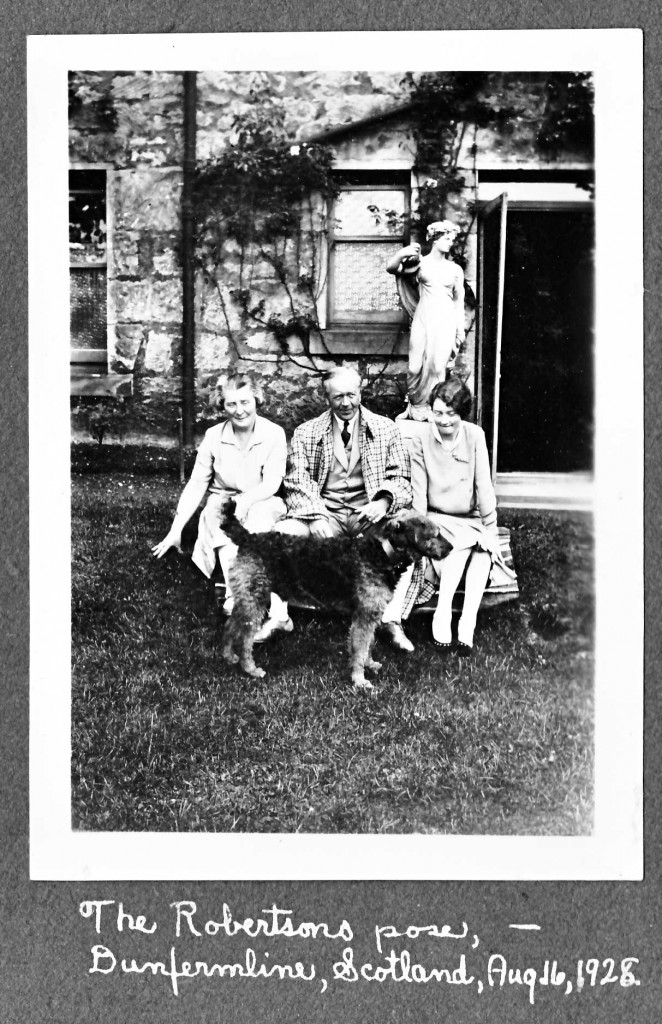
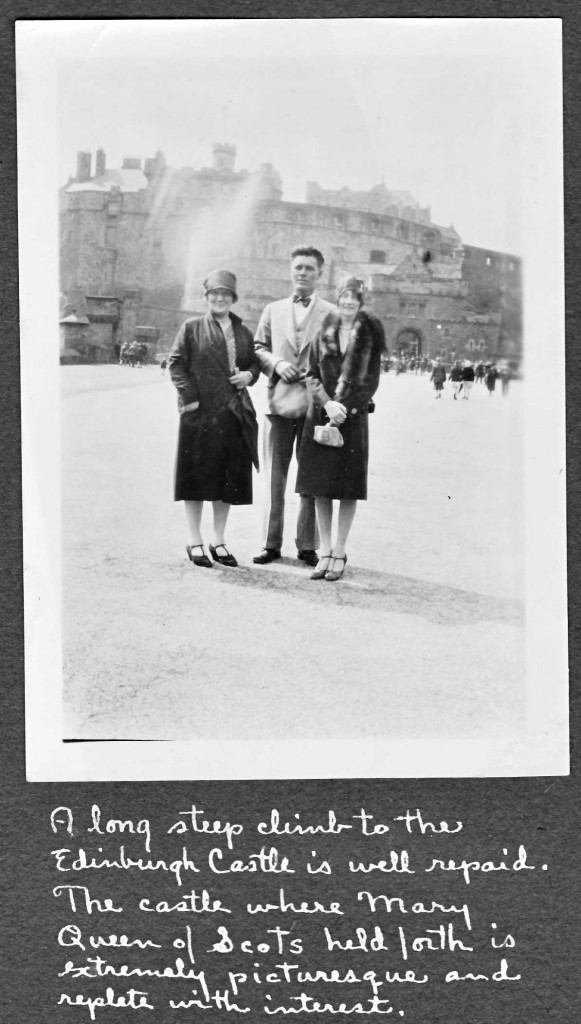 The old Scottish Parliament buildings are next to St. Giles. At the end of the Royal Mile, the Holyrood Palace stands at the foot of a large rocky cliff. It is square in shape with a court in the center. In this palace are the Royal Apartments used by the King and Queen every year while visiting Edinburgh. Also, besides picture galleries, are Queen Mary’s rooms with her original bed and hangings, Lord Darnley’s rooms, bed, etc., and the spot where Rizzi [David Rizzio] was assassinated at Darnley’s order because of his intimacy with Queen Mary. The chapel is in ruins, but very fine ones. It also contains a vault holding a number of Scottish kings.
The old Scottish Parliament buildings are next to St. Giles. At the end of the Royal Mile, the Holyrood Palace stands at the foot of a large rocky cliff. It is square in shape with a court in the center. In this palace are the Royal Apartments used by the King and Queen every year while visiting Edinburgh. Also, besides picture galleries, are Queen Mary’s rooms with her original bed and hangings, Lord Darnley’s rooms, bed, etc., and the spot where Rizzi [David Rizzio] was assassinated at Darnley’s order because of his intimacy with Queen Mary. The chapel is in ruins, but very fine ones. It also contains a vault holding a number of Scottish kings.


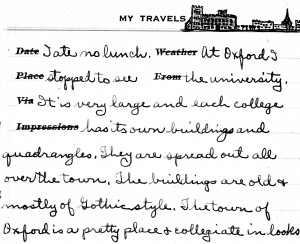




 Today was a hard one. After four hours sleep, I got up at five and left the Y 45 minutes later for Dover. There were many hills, but hanging onto a truck for 13 miles helped out. The boat left at 12:55 and I arrived at 11:50 after 84 miles from London. Went to the bank, ate a hurried lunch, and made it to boat with three minutes to spare. The trip across the Channel to Calais took a little over an hour. As we left England, the
Today was a hard one. After four hours sleep, I got up at five and left the Y 45 minutes later for Dover. There were many hills, but hanging onto a truck for 13 miles helped out. The boat left at 12:55 and I arrived at 11:50 after 84 miles from London. Went to the bank, ate a hurried lunch, and made it to boat with three minutes to spare. The trip across the Channel to Calais took a little over an hour. As we left England, the 





 Had a good lunch and got 130 Belgian francs—130 equal 100 French. Leaving town, I wound up a narrow deep gorge and then through miles of beautiful hilly country. The roadsides are lined with apple trees and the hills with grapevines. Neither are yet ripe though. At the Belgian customs I found I had gone by their customs at the entrance without stopping and did not have papers for my bike. Then I remembered hearing a shout as I entered
Had a good lunch and got 130 Belgian francs—130 equal 100 French. Leaving town, I wound up a narrow deep gorge and then through miles of beautiful hilly country. The roadsides are lined with apple trees and the hills with grapevines. Neither are yet ripe though. At the Belgian customs I found I had gone by their customs at the entrance without stopping and did not have papers for my bike. Then I remembered hearing a shout as I entered 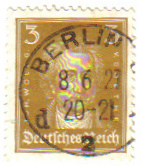 Going across a bridge I presented my passport to the German who also spoke English. I was admitted with no search or duties on my bike. The road lay in the Moselle River valley and I followed it to
Going across a bridge I presented my passport to the German who also spoke English. I was admitted with no search or duties on my bike. The road lay in the Moselle River valley and I followed it to 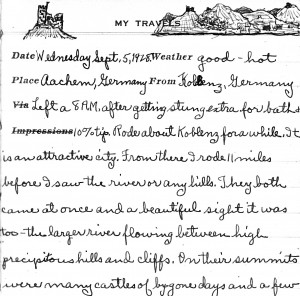

 Left Aachen at 7:15 and soon came to Belgian border. Had to pay a duty on my bike and as I didn’t have the required sum, the officer was kind enough to cut it to 136F. This sightseeing is mostly thorns. The way was all big hills and rotten dirt roads full of stones. A gale of wind was against me so that I made but 12 miles in 2 hours. [The mystery here is: How does he know that?] Made Liege by 11:30 and was so worn out I had a bite to eat—ate some rolls on the steps to the station, much to the disgust of one employee, and took the 1:58 train (3rd class) for
Left Aachen at 7:15 and soon came to Belgian border. Had to pay a duty on my bike and as I didn’t have the required sum, the officer was kind enough to cut it to 136F. This sightseeing is mostly thorns. The way was all big hills and rotten dirt roads full of stones. A gale of wind was against me so that I made but 12 miles in 2 hours. [The mystery here is: How does he know that?] Made Liege by 11:30 and was so worn out I had a bite to eat—ate some rolls on the steps to the station, much to the disgust of one employee, and took the 1:58 train (3rd class) for 
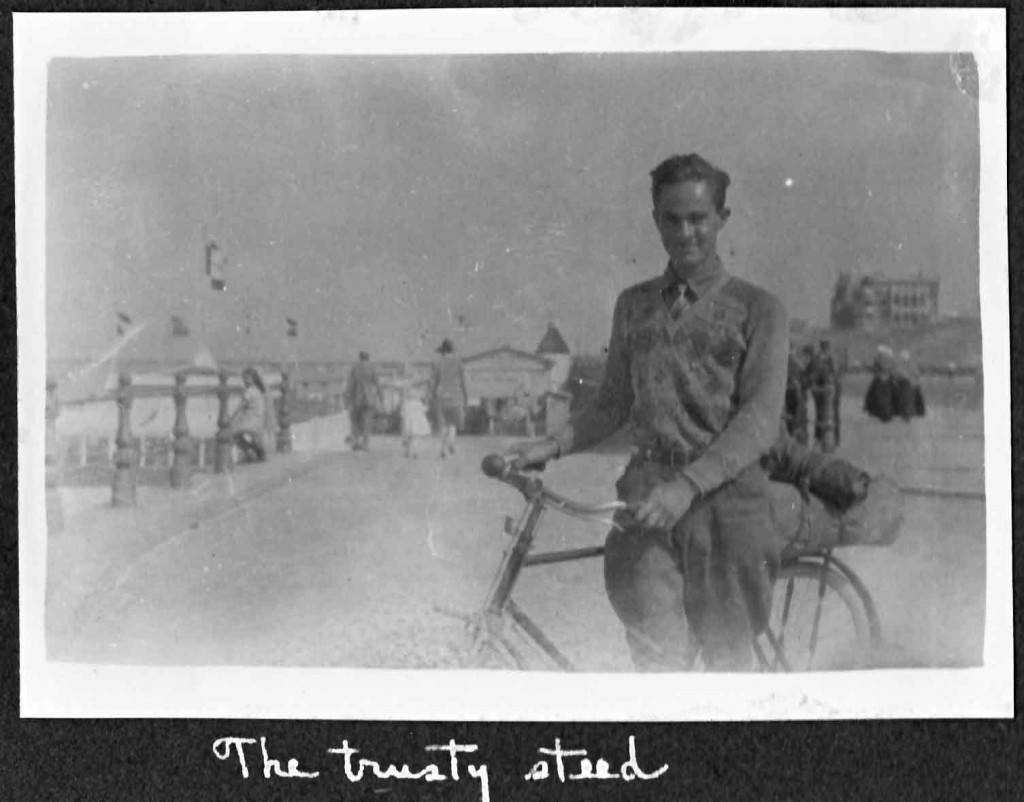 In town again I went to the station and got my bike. Had to wire Liege to send it on. Had more soup and chips and an apple pie effect for dinner. Spent the evening walking around, writing letters, washing, and darning socks.
In town again I went to the station and got my bike. Had to wire Liege to send it on. Had more soup and chips and an apple pie effect for dinner. Spent the evening walking around, writing letters, washing, and darning socks.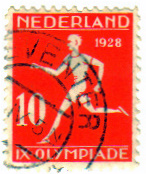



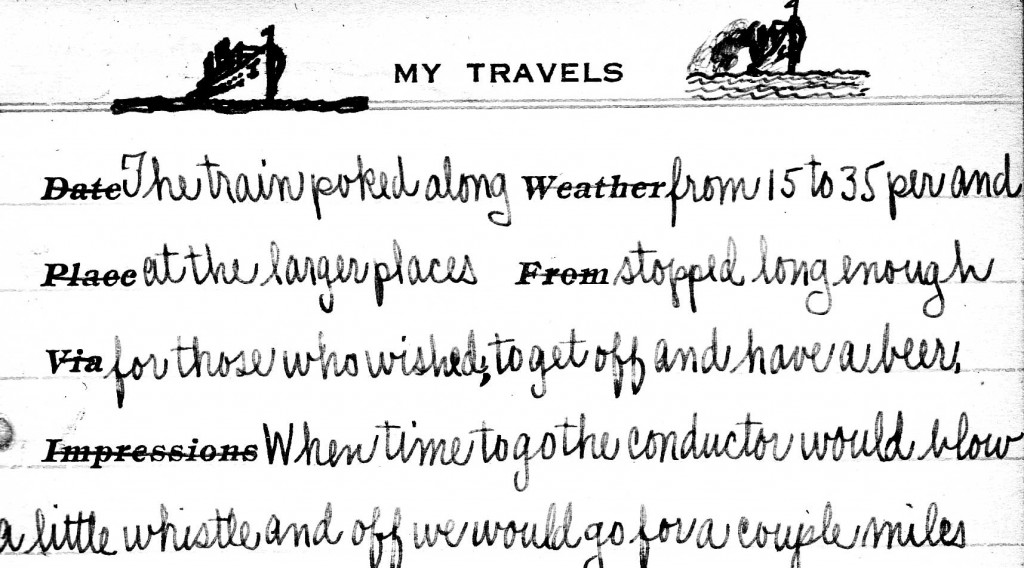
 After buying a loaf of raisin bread, I went aboard the boat. It takes a Stockholm train over to
After buying a loaf of raisin bread, I went aboard the boat. It takes a Stockholm train over to  Monday, September 17, 1928
Monday, September 17, 1928




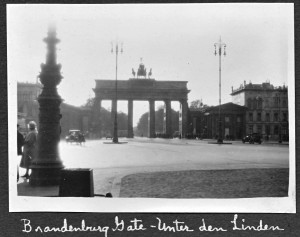
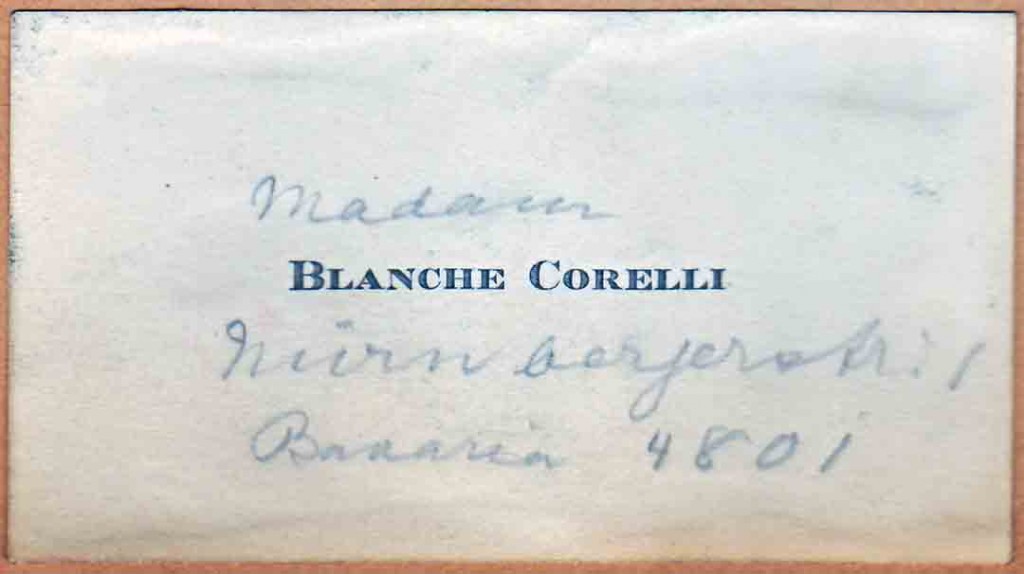 By the time I got back to the hotel it was nearly five. Took my bike out and had it fixed, then took a walk west on the
By the time I got back to the hotel it was nearly five. Took my bike out and had it fixed, then took a walk west on the 

 Sunday, September 23, 1928
Sunday, September 23, 1928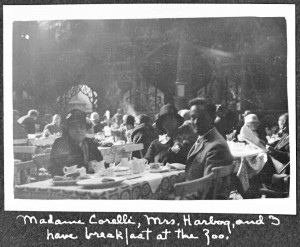
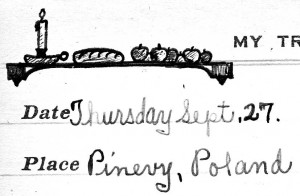
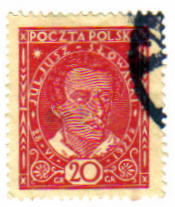 Am writing by candle. Had quite a day. The first thing was a half-hour’s argument with the gasthaus owner’s wife over the coffee. She must have been dumb not to understand after all of my explaining and diagrams, but I was determined not to pay for it. I finally had my way and left at ten. At 12 I came to Poland, but found my visa had expired three days before. After much telephoning and a two-hour wait, they arranged it so I could get a visa in a nearby city and proceed on my way from there. A man there rode with me and by three I had a new visa. Sometimes Polish is worse than deutsch to understand.
Am writing by candle. Had quite a day. The first thing was a half-hour’s argument with the gasthaus owner’s wife over the coffee. She must have been dumb not to understand after all of my explaining and diagrams, but I was determined not to pay for it. I finally had my way and left at ten. At 12 I came to Poland, but found my visa had expired three days before. After much telephoning and a two-hour wait, they arranged it so I could get a visa in a nearby city and proceed on my way from there. A man there rode with me and by three I had a new visa. Sometimes Polish is worse than deutsch to understand.